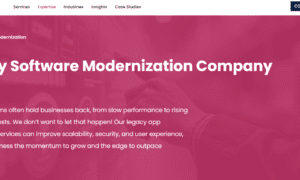Ever wondered what lies ahead for GRC (Governance, Risk, and Compliance) tooling in cybersecurity? You’re not alone. The cybersecurity landscape never stands still, and keeping pace with the latest trends in GRC tooling is crucial. GRC tools are no longer just a ‘nice to have’; they’re becoming essential in managing cyber risks effectively.
With advancements in technology, these tools are evolving rapidly, offering more automation, real-time analytics, and predictive capabilities. By staying updated, companies can ensure they’re not just reacting to cyber threats but proactively managing and mitigating them. This blog post will navigate through the latest trends and innovations shaping the future of GRC tooling, helping you stay one step ahead in cybersecurity.
Understanding GRC Tooling
Understanding GRC (Governance, Risk Management, and Compliance) tooling is essential in today’s world. These tools are becoming more vital as organisations aim to stay ahead of cyber threats. But what exactly is GRC tooling, and why is it so important in cybersecurity?
Definition and Components
GRC tooling involves three main components: Governance, Risk Management, and Compliance.
- Governance: This is about making sure that the company follows laws, regulations, and standards. It ensures that everyone in the organisation knows what they should be doing. For example, governance involves setting policies, establishing roles, and making sure that everyone is accountable.
- Risk Management: This part is about identifying, assessing, and prioritising risks. It’s like being a detective. You look for potential threats and think about how they might affect your company. After identifying risks, you decide on the best way to manage them. This could mean avoiding the risk, mitigating it by adding protections, or accepting it if the risk is low.
- Compliance: Compliance ensures that the organisation meets all the legal and regulatory requirements. It’s like the rules of the game. You must follow these rules to avoid penalties and legal issues. Compliance checks often involve audits and reviews to make sure everything is up to standard.
Combining these components, GRC tools help companies create a structured strategy to handle risks, governance issues, and compliance needs. They automate processes, making it easier to monitor and manage these areas efficiently.
Importance in Cybersecurity
GRC tools play a critical role in maintaining cybersecurity standards and managing risks. Here’s why:
- Proactive Risk Management: With GRC tools, companies don’t just wait for a cyber attack to happen. They continuously monitor for risks and vulnerabilities, allowing them to take action before things get out of hand.
- Automated Compliance: Keeping up with all the regulations can be overwhelming. GRC tools automate the compliance process, ensuring that companies stay up-to-date with the latest requirements without manual checks.
- Improved Decision Making: GRC tools provide valuable insights through real-time analytics. This helps in making smarter decisions quickly, especially when dealing with threats.
- Streamlined Processes: Manual processes are time-consuming and likely to have errors. GRC tools streamline these processes, ensuring that everything runs smoothly and efficiently.
- Enhanced Accountability: Everyone knows their roles and responsibilities with clear governance structures. This enhances accountability and ensures that there are no gaps in security measures.
- Cost Efficiency: By automating risk management and compliance processes, companies can save money and resources, reducing the overhead costs associated with manual tasks.
Understanding the components and importance of GRC tools in cybersecurity shows why they are an essential investment for any organisation looking to protect itself against increasing cyber threats. These tools are like the unsung heroes, silently working in the background to ensure everything is safe, compliant, and well-governed.
Current Trends in GRC Tooling
As we navigate the ever-evolving landscape of cybersecurity, GRC (Governance, Risk, and Compliance) tools are also transforming. The latest trends are pushing these tools to become smarter, more integrated, and user-friendly. Here’s a closer look at the key trends shaping the future of GRC tooling.
Automation and AI
Automation and artificial intelligence (AI) are revolutionising GRC tools. Imagine a GRC tool that can automatically detect threats, assess risks, and even suggest solutions—all without human intervention. AI-driven GRC tools can:
- Predict potential risks: By analysing vast amounts of data, AI can foresee risks before they become threats.
- Automate repetitive tasks: Tasks like compliance checks and risk assessments can be automated, saving time and resources.
- Improve accuracy: AI minimises human error, ensuring more accurate risk assessments and compliance checks.
Integration with Other Systems
Gone are the days when GRC tools worked in silos. The trend is now towards integrating GRC tools with other business systems. This holistic approach means:
- Seamless data flow: Integrating GRC tools with HR, finance, and IT systems ensures that information flows smoothly between departments.
- Better decision-making: With all data in one place, businesses can make more informed decisions.
- Unified compliance: Compliance with regulations becomes more streamlined as GRC tools work hand-in-hand with other business systems.
User Experience Enhancements
Modern GRC tools are not just smarter and more connected—they’re also easier to use. Developers are focusing on enhancing the user experience (UX), making these tools more accessible and efficient. Here’s what you can expect:
- Intuitive interfaces: User-friendly dashboards and interfaces make it easier for employees to navigate and use the tools.
- Customisability: Users can tailor GRC tools to meet their specific needs, ensuring a better fit for their organisation.
- Mobile accessibility: With the rise of remote work, GRC tools are now mobile-friendly, allowing users to manage risks and compliance on the go.
As we see, the future of GRC tooling lies in smarter technologies, seamless integrations, and improved user experiences. By staying on top of these trends, businesses can ensure they’re well-equipped to tackle the cybersecurity challenges of tomorrow.
Challenges and Opportunities
The future of GRC (Governance, Risk Management, and Compliance) tooling in cybersecurity holds both challenges and opportunities for organisations. Understanding these can help businesses navigate the ever-evolving landscape of cybersecurity with more confidence.
Adoption Barriers
Adopting advanced GRC tools isn’t always smooth sailing. Several common barriers can make the transition challenging:
- Cost: Many businesses find the initial investment in GRC tools to be prohibitively expensive. This includes not just the cost of the software itself, but also the expenses related to implementation and ongoing maintenance.
- Complexity: Advanced GRC tools can be incredibly complex, making them difficult to integrate with existing systems. This complexity also means that staff need extensive training to use the tools effectively, which can be time-consuming and costly.
- Resistance to Change: People are often resistant to change, especially when it involves learning new technologies. Employees might be reluctant to adopt new tools, preferring to stick with the familiar ways of managing risk and compliance.
Understanding these barriers is crucial for businesses looking to adopt new technologies. Overcoming them requires strategic planning and clear communication.
Opportunities for Improvement
Despite the challenges, there are many opportunities for organisations willing to adopt advanced GRC tools. By addressing the barriers, companies can unlock significant benefits:
- Training and Support: Providing comprehensive training and ongoing support can mitigate the complexity barrier. When employees understand how to use GRC tools effectively, they become more comfortable and efficient, reducing resistance to change.
- Cost-Benefit Analysis: Conducting a thorough cost-benefit analysis can help justify the investment in GRC tools. Highlighting the long-term savings and efficiency gains can make the initial expense more palatable.
- User-Friendly Solutions: Choosing GRC tools with intuitive interfaces can reduce the learning curve. Modern tools often come with features designed to simplify the user’s experience, which can ease the transition and increase adoption rates.
- Clear Communication: Ensuring that all stakeholders understand the importance of GRC tools and the benefits they bring can reduce resistance. Regular communication and involving employees in the decision-making process can enhance buy-in.
Adopting advanced GRC tools can transform how an organisation manages risks and ensures compliance. By addressing common barriers and focusing on the opportunities for improvement, companies can effectively navigate the adoption process, leading to a more secure and compliant future.
Staying proactive and adaptable will help organizations make the most of the evolving landscape of GRC tooling in cybersecurity.
Future Innovations in GRC Tooling
As cybersecurity continues to evolve, GRC tools are advancing to meet new challenges. Future innovations promise to enhance both preventive measures and real-time response capabilities. Here’s a look at some exciting trends you can expect in the world of GRC tooling.
Predictive Analytics: Foreseeing and Mitigating Risks
Predictive analytics is transforming how we handle cybersecurity within GRC frameworks. By analysing historical data and identifying trends, these tools can forecast potential risks before they become actual threats.
Imagine having a crystal ball that helps you foresee dangers lurking around the corner. Predictive analytics in GRC tools works similarly by:
- Identifying Patterns: It scans through vast datasets to identify patterns that suggest potential risks.
- Assessing Likelihood: Once risks are identified, these tools evaluate the likelihood of these threats materialising.
- Making Recommendations: Based on its findings, predictive analytics can suggest measures to mitigate these risks, ensuring your organisation stays one step ahead.
With these capabilities, predictive analytics makes it possible for businesses to adopt a more proactive approach. Instead of merely reacting to incidents, companies can plan and implement preventive measures, reducing the overall impact of cyber threats.
Real-Time Monitoring: Advancements and Impact
The ability to monitor cybersecurity threats in real-time is crucial for any organisation. Advancements in real-time monitoring have significantly bolstered GRC tooling, making it more effective and responsive.
These tools now offer:
- Instant Detection: Real-time monitoring can instantly detect anomalies and threats, ensuring that no suspicious activity goes unnoticed.
- Automated Alerts: Once an issue is detected, automated alerts are sent to the relevant personnel, enabling faster response times.
- Comprehensive Dashboards: Modern GRC tools feature user-friendly dashboards that provide a comprehensive overview of the organisation’s cybersecurity posture. This makes it easier for stakeholders to understand and act upon real-time data.
The impact of real-time monitoring on cybersecurity cannot be overstated. With these advancements, organisations can quickly identify and mitigate issues, thereby reducing the window of opportunity for cyber attackers. Real-time insights enable businesses to respond swiftly, ensuring that potential threats are dealt with before they cause significant harm.
By leveraging predictive analytics and advanced real-time monitoring, the future of GRC tooling is set to make cybersecurity management more intuitive and effective. These innovations not only help foresee and mitigate risks but also ensure that organisations can respond quickly to emerging threats.
Best Practices for Implementing GRC Tools
When it comes to implementing GRC (Governance, Risk Management, and Compliance) tools, following best practices is crucial to ensure effective and efficient adoption. Doing this not only helps in mitigating risks but also enhances overall compliance and governance within an organisation.
Strategic Planning
Before diving into the implementation of GRC tools, it’s essential to have a sound strategic plan. Why is this step so critical?
- Define Clear Objectives: Determine what you aim to achieve with the new GRC tool. Is it improving compliance, enhancing risk management, or something else?
- Scope Assessment: Identify the areas within your organisation that will be impacted and how extensive the GRC tool’s implementation will be. This helps in pinpointing specific needs.
- Resource Allocation: Plan the required resources—both in terms of budget and human resources. Ensure you have the necessary support and that everyone understands their role.
Strategic planning acts like a blueprint, guiding your organisation through the implementation process. Without this, you might find yourself lost, much like trying to build a house without a set of plans.
Employee Training
No tool, no matter how advanced, can be effective if the users don’t know how to use it. This is where comprehensive employee training comes in.
- Training Programs: Develop detailed training programs tailored to different levels of users. A one-size-fits-all approach usually falls short.
- Continuous Learning: Make training an ongoing process. As the GRC tool evolves, so should your training programs.
- Practical Sessions: Include hands-on sessions where employees can practice using the GRC tool in a controlled environment. This boosts their confidence and proficiency.
Think of your GRC tool as a high-tech gadget. You wouldn’t buy the latest smartphone and skip the user manual—or would you? Proper training ensures your employees can effectively wield these powerful tools.
Continuous Improvement
Once the GRC tools are implemented, the journey doesn’t end. Continuous improvement is key to staying ahead of evolving threats.
- Regular Updates: Cyber threats are always changing. Ensure your GRC tool is regularly updated to handle new issues.
- Feedback Mechanisms: Have a system in place to collect feedback from users. This can highlight any issues or areas for improvement.
- Regular Audits: Periodically review the effectiveness of your GRC implementation. Audits help in identifying gaps and opportunities for enhancement.
Continuous improvement is like tending to a garden. Regular maintenance ensures that it not only survives but thrives under all conditions.
By focusing on strategic planning, comprehensive employee training, and continuous improvement, organisations can successfully implement GRC tools and reap the benefits of enhanced governance, risk management, and compliance.
Conclusion
The future of GRC tooling in cybersecurity is bright and full of potential. Innovations in predictive analytics and real-time monitoring are transforming how businesses manage risks. By integrating automation and AI, these tools are becoming indispensable in proactive threat management.
Staying ahead with the latest advancements in GRC tooling is not just about technology. It’s about adopting a holistic approach that includes strategic planning, continuous improvement, and user training. Organisations that embrace these changes will be better equipped to handle the evolving cybersecurity landscape.
Investing in advanced GRC tools is a smart move. It ensures that your organisation is not just compliant but also resilient against the growing number of cyber threats. Keep your systems updated and your teams trained. This way, you can turn these tools into powerful allies in your cybersecurity strategy.
For more information, see CERRIX.
































